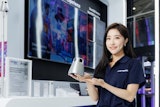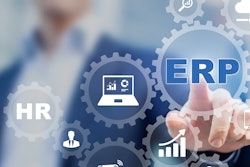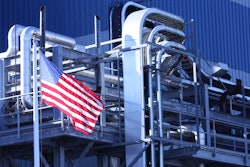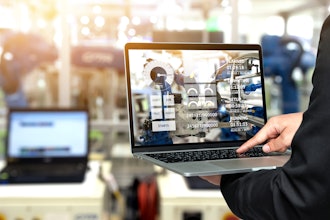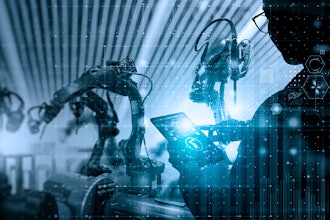
 Andres Richter
Andres RichterIt’s not breaking news that manufacturing ERP systems help organizations solve their operational challenges. Implementing ERP into any manufacturing operation is a potentially powerful strategy to reduce production costs, streamline processes and in the long term, impact a company's growth.
With the vast majority of businesses now focusing on 'going digital' and the rise of digital transformation within the organization, ERP for manufacturing must be primed and ready to leverage the latest technologies, such as IoT (Internet of Things) and AI (Artificial Intelligence). Here are five trends and tangible examples that best illustrate 'ERP in action' and help shed some light on the future of ERP in the world of manufacturing.
1. IoT-friendly – Hyper-connected ERP gives manufacturers a new level of interoperability between core business processes, external data, IoT devices and third party applications. It's the power of IoT-enabled manufacturing ERP that syncs the back office with the shop floor. ERP systems supported by robust APIs (Application Program Interfaces) can easily receive data from sensors along an assembly line and issue real time alerts. For example, when a drill bit wears out, an ERP system integrated with an IoT solution can issue an order for a replacement part, and even request a service call.
IoT-enabled ERP can also power inventory control. One of Priority Software's customers, for example, produces glass bottles. Sensors on the production floor in this operation measure the exact weight and volume of each drop of liquid glass into a mold. In real-time, the system delivers this data to the ERP backend, instantly updating the inventory balance on the floor to enable accurate material cost calculations.
2. Powered by AI – We're all familiar with Siri and Alexa to make phone calls, set alarms and search for information. This same AI-based technology can also be used to boost efficiency in manufacturing. A built-in, voice activated AI-powered personal assistant can provide manufacturers with convenient and easy-to-use tools to make more informed decisions based on more in-depth data analysis. Integrated AI tools can help streamline production processes by automatically analyzing shop floor data and pinpointing operational anomalies. Not having to manually analyze vast amounts of data to optimize manufacturing processes can save valuable time and costly resources.
3. ERP agility – In the hybrid, hyper-connected world, fast and efficient production and equally fast turnaround time are top priorities for manufacturers. The pace of change is so quick that often companies cannot be sure what their business model will be or how their business processes will look in the next two to three years. ERP systems deployed for manufacturing must therefore support business agility in a constantly changing configuration of products, customers, partners and suppliers.
If you want to add a new product line, for example, a flexible ERP can enable users to create new product categories, names and specifications. Similarly, flexible ERP can support new business processes, such as customized authorization processes for different types of purchase orders. And when new business rules can be defined on the fly, flexible ERP systems can automatically send notifications to sales reps every time a new product comes off the assembly line, ready to be shipped. In turn, sales reps can then notify their customers in real time.
4. Support for citizen developers – As defined by Gartner, “A citizen developer is a user who creates new business applications for consumption by others using development and runtime environments sanctioned by corporate IT.” Ideally, internal IT teams, admins and even business users should be able to handle their own software applications, minimizing the dependency on third party vendors and ultimately, shortening the time required to implement system changes. The ERP system of the future needs to provide the tools that allows users to customize the system without the need for programming skills.
5. Mobile ERP – Today's mobile ERP is already powered by a range of dedicated apps for Mobile Sales Force, Proof of Delivery, Warehouse and Mobile Service. ERP systems shouldn’t only enable users to access data on the go, they should also enable them to develop their own custom mobile apps quickly and easily.
Mobile apps are becoming the 'must-have' tools to respond to real-time production changes. Immediate mobile access on the shop floor, for example, allows users to handle production line problems as they occur, reducing downtime and wasted materials. Using mobile apps, line managers can ensure operators are adhering to production schedules and issue maintenance orders, on-the-job instructions and even track material movement in real-time even when they are off site. Supervisors can easily access shared data while they're walking the shop floor and receive alerts and notifications on change work orders and the latest information about product availability, averting problems before they occur.
For manufacturers to keep pace with today's growing market trends and requirements, they need an ERP system that can connect devices, internal departments, suppliers, partners and customers in a single, easily accessible database. All too soon, using AI, ERP systems won’t simply log business processes, they'll actually make recommendations on how to improve them, becoming the real driving force behind the factory of the future.
Andres Richter is CEO of Priority Software.
